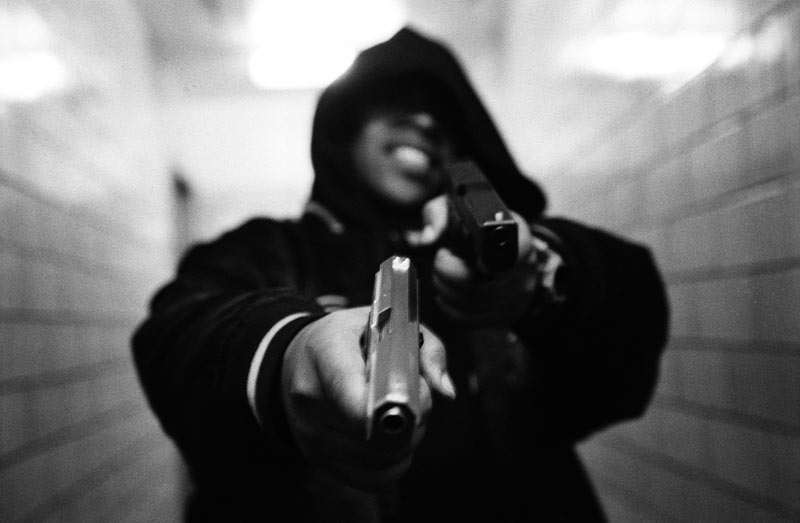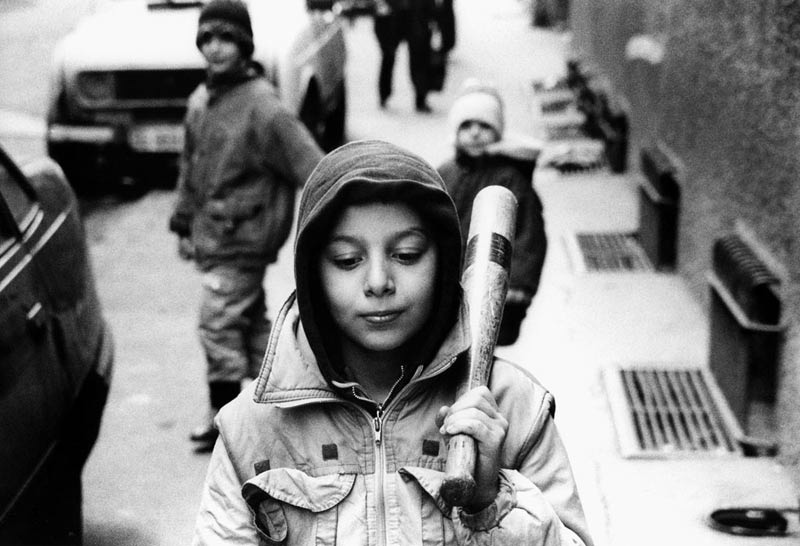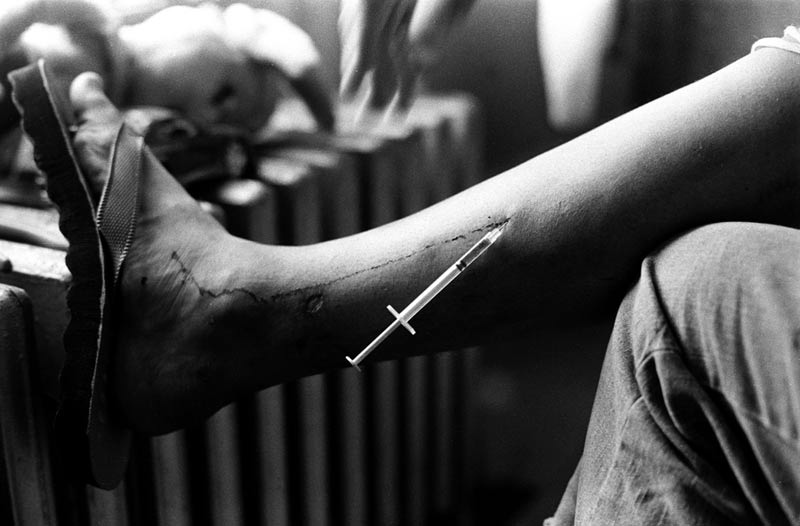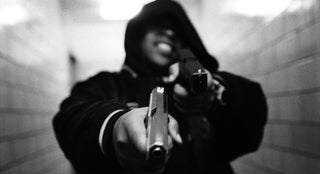Vladimir Milivojevich is considered “one of the most influential photographers of street culture in the new millennium,” but you may know him as Boogie, hailing from Belgrade, Serbia, and now operating out of Brooklyn, New York. Immensely influential, Boogie has developed an aesthetic and message all his own—his documentation street photography forces the viewer to not just see, but experience. There are photos that transport you, almost as if you’re there witnessing it—that’s the feeling I get from Boogie’s photography, from his work documenting gangs and drug culture, all the way to his commercial projects. “I just try to approach them with an open heart and with respect, and they can usually sense that,” says Boogie in our interview below. “In a way in the street, it’s all about energy, people sense each other before words are spoken.”
Boogie’s 6th book was just published last week, titled A Wah Do Dem—the publication is his first colored monograph, made up of images taken during the course of 3 trips to Kingston, Jamaica.

Your photo book It’s All Good, published in 2006, was your first. Would you tell me a little about how you got into publishing your work into print and what motivated you into doing so?
Having a book out is an important milestone for every photographer. In my case, it’s something like—even when I’m gone, someone might dig out my book in a bookstores. It’s gets close to immortality I guess. Also, having your work in a form of an object feels good, much more real than looking at shit online all the time.
How do you approach your subjects since they tend to be less conventional and off the grid?
I just try to approach them with an open heart and with respect, and they can usually sense that. In a way in the street, it’s all about energy, people sense each other before words are spoken.
Is it necessary for you to build a side of trust with that person? If so, how do you do that?
Of course it’s important for people to trust you, otherwise they won’t be themselves when you point your camera at them. There is no recipe for trust building, people on the margins always see through you.
How does it feel when you’re in their element? How does it feel to document it?
Photography sometimes feels a bit like acting, you have to get into a certain role… in a way you have to become who you are shooting, you need to understand them in order to properly capture them. Getting out of the role sometimes might be a problem…

Has there ever been a time where you have been in serious danger all for a photograph? What was that feeling like?
While I was shooting, I never felt like I was risking my life, but then looking back, I realized I had several times… I don’t really think there are any photographs worth risking your life for. There are so many things to shoot out there.
I was in some sketchy situations—once I was in a crack house by myself while my junkie friend went out to score drugs, when another junkie, out of her mind, walked in holding a hammer. I looked through the window, there was broken glass and wires down there, so if I had jumped out I’d be dead. I had a knife in my back pocket, so another solution would have been to stab the junkie. Then the next moment, my junkie friend walks in and it’s all good. When I went back out onto the street, it was the best breath of air ever.
Tracing all the way back, what convinced you to pick up a camera and begin documenting the types of subjects you do?
Both my dad and my grandfather were amateur photographers, so cameras were always around… My dad was my biggest inspiration, he’s the one who got me into photography. I’m pretty sure my subjects and my style of shooting are heavily influenced by my upbringing in Belgrade, Serbia, by all the shit (wars etc.) we’ve been through.

As a viewer of your art, what do you want us to feel from the photographs you take? And what do you want to share about specific subjects?
That’s entirely up to you, the photographs should speak for themselves.
Who are some of your favorite photographers?
Anders Petersen, Malick Sidibe.
Has your work changed your life?
My work is my life, at least a huge part of it. I live photography, I shoot every day, thinking about it all the time. The two most important things in my life are family and photography.
There might be a few but if you could tell me one scene you’ve witnessed while having your camera that you will never forget?
It was a pit bull killing a cat in the projects in BedStuy, I will never forget that horror. FUCK.
Can you tell us a little about your recent book A Wah Do Dem?
Yep, my book A Wah Do Dem just came out recently, published by DRAGO publishing from Rome, Italy. It’s my first book in color, about Kingston, Jamaica. I did it over 3 trips there, hanging out with gangsters, went on a raid with local cops, it was all pretty mind-blowing.

What made you choose that location as for your new book?
My wife’s friend is married to a local guy there, we went to visit them having no idea what to expect, and the city just blew my mind… I went back two more times for more action.
Do you have any other projects you are currently working on? Besides publishing your book. If so, what will those projects be?
An updated edition of It’s All Good is coming out in Fall this year, and it’s gonna kick ass. I found some photos that I overlooked before, so it’s gonna be an improved version, much better in my opinion.
Working on a couple of other personal projects at the moment, stay tuned.
People that want to get into documentary photography similar to yours may ask something like, “How do you approach a person for the photograph?” Is there any advice that you can give about that?
Nope, it’s all trial and error.
***
Ah Wah Do Dem can be purchased here on Amazon. Follow Boogie on Instagram @boogiephotographer.

